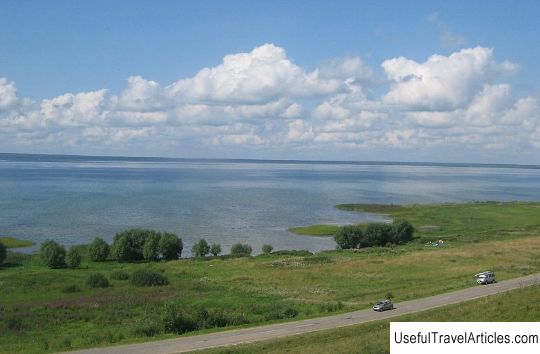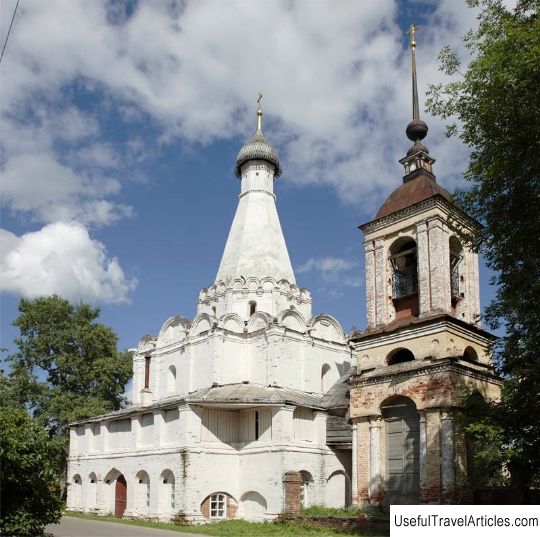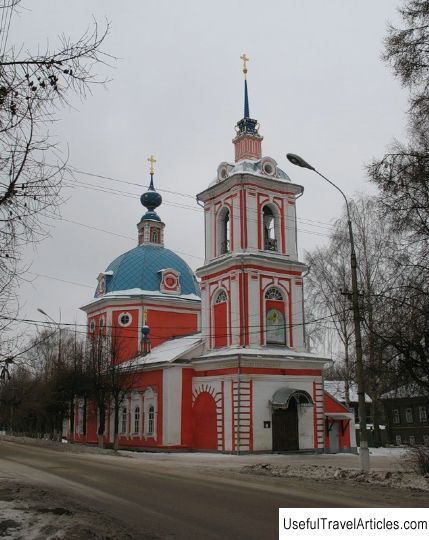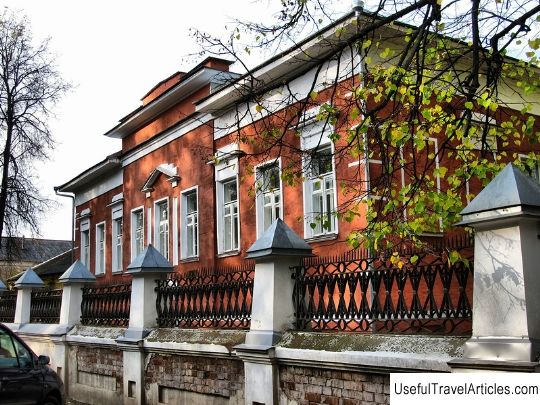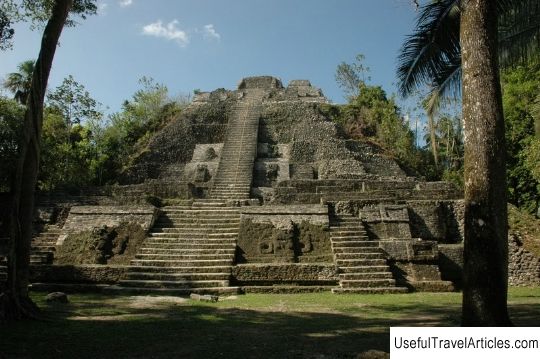Museum-Estate ”Petra's Boat” description and photo - Russia - Golden Ring: Pereslavl-Zalessky
Rating: 7,6/10 (100 votes) 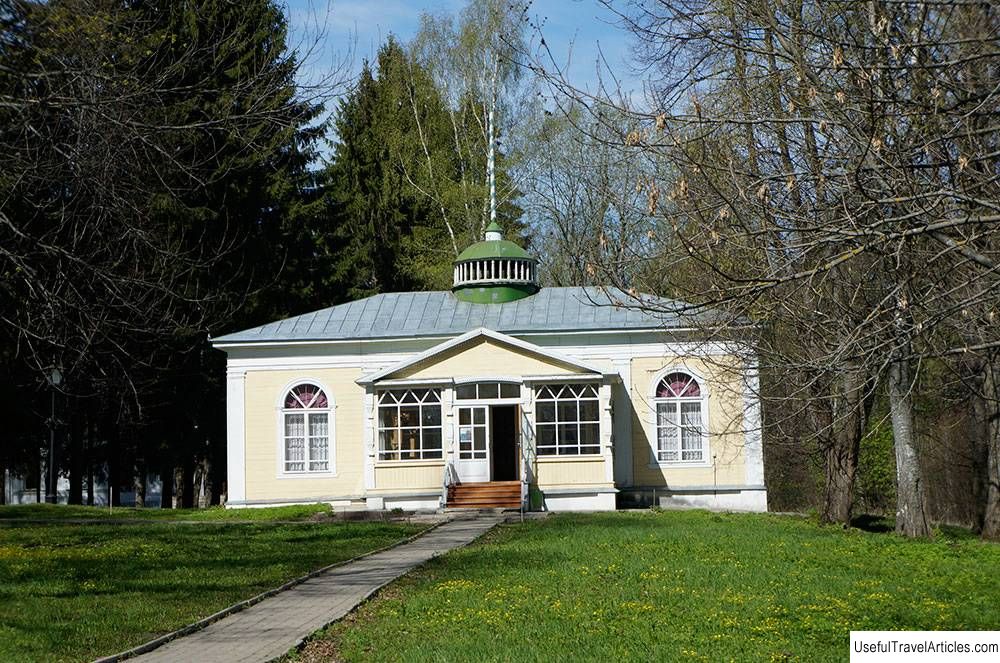
Museum-estate “Peter's Boat” description and photo - Russia - Golden Ring: Pereslavl-Zalessky. Detailed information about the attraction. Description, photos and a map showing the nearest significant objects. Photo and descriptionIn the estate museum overlooking Lake Pleshcheyevo, near the village of Veskovo, a unique historical relic is preserved - the boat of Peter I. In the 19th century, several entertainment pavilions in the Empire style were built in the estate - they also now house museum expositions dedicated to the time of Peter the Great. The amusing flotilla of Peter IPeter I from his early youth was obsessed with "Mars fun". The very first amusing regiment was created for little Peter by his father Alexei Mikhailovich . In the village of Preobrazhenskoye, a small fortress was built - Pressburg , where the young man could, playing, learn military affairs. With age, the number of troops increased, the fun became more and more serious: Peter studied fortification, artillery, tactics and strategy, although it looked like teenage fun. At the age of 14-15, he also began to study maritime affairs under the guidance of the Dutchman Karsten Brandt . In the spring of 1688, in the barn of the boyar Nikita Romanov , the young tsar found his father's old English boat. It was repaired, re-equipped and at first they sailed on it along the Yauza, and then transferred to Izmailovo, where there was a suitable pond. In the summer of the same year, Peter supposedly went on a pilgrimage to the Trinity-Sergius Lavra, and he himself drove into the nearby Pereslavl. He saw Lake Pleshcheyevo , and it seemed to him suitable for building a real shipyard. In the same year, construction began, and in the summer of 1689 there was already a shipyard with a pier . Five ships were built here: three light yachts and two frigates. The first frigate Mars, equipped with 30 cannons, left the shipyard in 1692. Previously, all ships from the Yauza and Prosyanny pond to Izmailovo were transferred here. Peter himself studied carpentry and worked as an ax. In the same 1692, the first parade of the Russian fleet took place on Lake Pleshcheyevo , in the presence of all the city clergy, with the blessing of water. By this time, on a high hill outside the village of Ves'kovo, a whole "amusing courtyard" had been built - a small wooden palace with five rooms, outbuildings and a house of the Ascension Church. The village was bought into the treasury, and the population of Rybnaya Sloboda was entrusted with supervision of all farms. But a year later, Peter stopped coming here. Lake Pleshcheyevo became too small for him - the king was looking for an outlet to the sea. Next shipyard, no longer "amusing", but real, it was founded in Arkhangelsk, then they began to build ships in Voronezh and the Don, and in 1702 the Baltic Fleet appeared. History of the Museum Peter returned to Pereslavl in 1722. He saw dilapidated buildings, decaying ships and commanded to keep them for the memory and edification of posterity . The ships were placed under the shed, and then there was a fire, and their remains were sent to the barn. The wooden palace was dismantled at the end of the 18th century, and the remains of utensils and furniture were piled into the same barn. It was here that all this was discovered in 1802 by Prince Ivan Mikhailovich Dolgorukov, the then governor of Vladimir. The Pereslavl Museum is proud of the fact that it "The oldest provincial museum in Russia." It's true - it officially appeared in 1803. Ivan Mikhailovich Dolgorukov was one of the most enlightened nobles of his time, a member of the Free Society of Lovers of Russian Literature, poet, translator and memoirist. In Vladimir, during his governorship, he opened a gymnasium and a theater, and in Pereslavl he set up a museum in order to preserve the memory of Peter the Great. Of all the ships, only one has survived - a small boat "Fortune" . A special "Botny House" was built for him, and "Fortune" was placed there. The inscription above the entrance read: "Zealous Peter the Great Pereslavl". For all the other surviving things, an inventory was made, and they were placed on the shelves next to each other. In the middle of the 19th century already Emperor Nicholas I begins to take care that in the provinces they preserve the memory of the past. In many memorable places, special premises are being built - gatehouses , in which permanent caretakers were supposed to live. Such a gatehouse was built, for example, at Borodino, and in 1842 it was built here. Aged sailors, the first museum keepers and guides, lived in it. And in 1853, on the initiative of the Grand Dukes Mikhail and Nicholas, a monument to Peter I was opened here. The author of the monument was the architect P. Campioni , and several more buildings were erected in the estate itself: Arc de Triomphe, Rotunda and White Palace . The White Palace and the Rotunda were specially built by the Pereslavl nobility for solemn dinners, balls and other events - exactly in the place where the wooden palace of the emperor himself once stood. In memory of Peter, balls were held here, which were called “Pereslavl assemblies.” In Soviet times, the White Palace was associated with the writer Mikhail Prishvin . The director of the local history museum invited the writer here to head the children's biological station, and he lived here in 1925. It is about these places that his "Nature Calendar" is written. During the war, the White Palace served as a haven for two orphanages at once. Prishvin lived nearby, in Usolye, went to visit these children on foot - and wrote about this a series of stories “Stories about Leningrad Children.” After the revolution, the museum escaped looting and continued to be a museum. Its exposition has changed several times, the current one dates back to 1984. Museum exposition Now the museum is a whole tourist complex of several buildings and exhibitions . It is located on a hill and there is a rather steep staircase - this should be borne in mind when visiting with children and the elderly. But from above there is a magnificent view of the lake and its surroundings. The most important object is the Botniy House , in which the “Fortuna” boat is still carefully preserved and a bust of Peter I made by F. Rastrelli. But, besides this, there are several more interesting museum objects arranged in the pavilions. The exposition in the White Palace was opened here in 2012 - she says about the history of the estate and about Peter I himself . Its first hall is the original remains of the Pleshcheev shipbuilding industry: carved ship decorations, equipment, tools and drawings. The second hall is the restored "room of Peter I" with original furniture and objects from the early 18th century, portraits of Peter's parents and his first wife. The third room tells about the history of the museum and the role of the Vladimir nobility of the 19th century in preserving the Petrine heritage. In the Rotunda, the original Empire interiors of the 19th century have been partially preserved and partially recreated: paintings, furniture and etc. It contains paintings, graphics and sculptures dedicated to Peter I and his associates. A funny and interesting exhibition called "Cool Place" is located in the 1842 gatehouse building. Lake Pleshcheyevo was famous for its fish, the Rybnaya Sloboda was located here, everyone was engaged in fishing: the suppliers of the sovereign's court, and monks, and just amateurs. The exhibition tells about the history of the city's fisheries. Another permanent exhibition in this museum is an exhibition of ship models by ship model S. Lushkin . He creates models of historical Russian ships of the XVII-XVIII centuries. according to drawings and drawings from those tree species from which the ships were built. In addition, a small exhibition of military equipment from the period of the Great Patriotic War is arranged on the territory itself: torpedoes, anti-aircraft guns, missile models, etc., a model of a ship on which you can take pictures, and a huge boulder - the closest relative of the famous Pereslavl blue stone.             We also recommend reading Natural park ”Vepsky forest” description and photo - Russia - Leningrad region: Boksitogorsky district Topic: Museum-Estate ”Petra's Boat” description and photo - Russia - Golden Ring: Pereslavl-Zalessky. |
